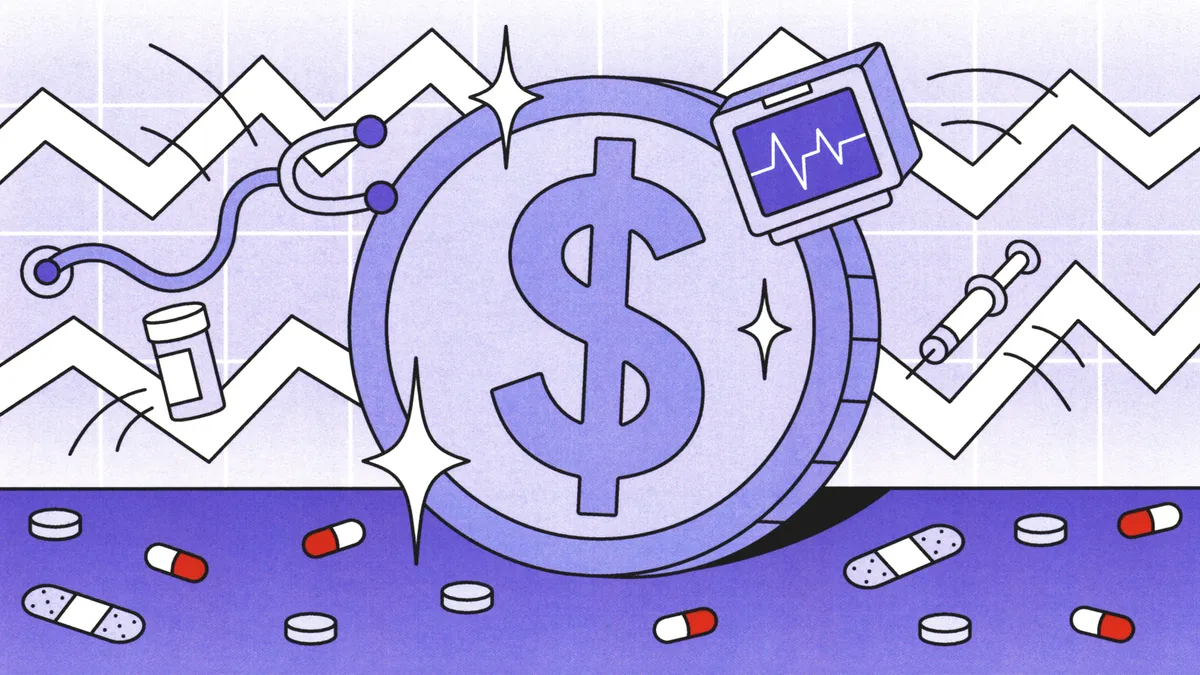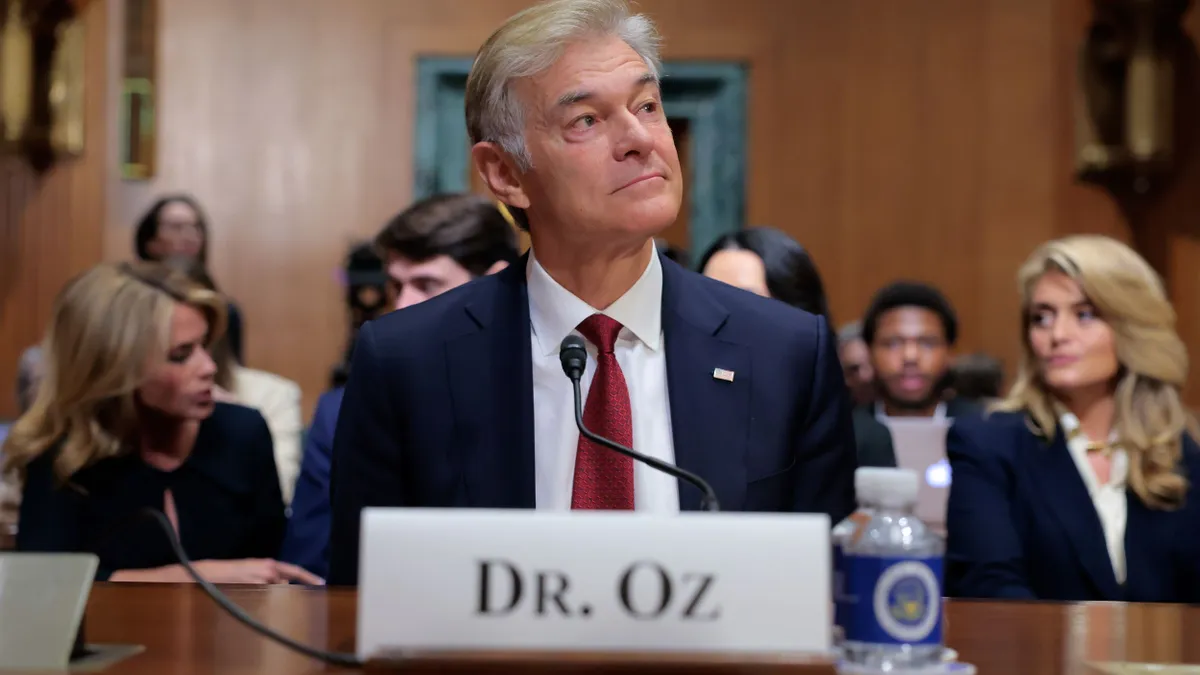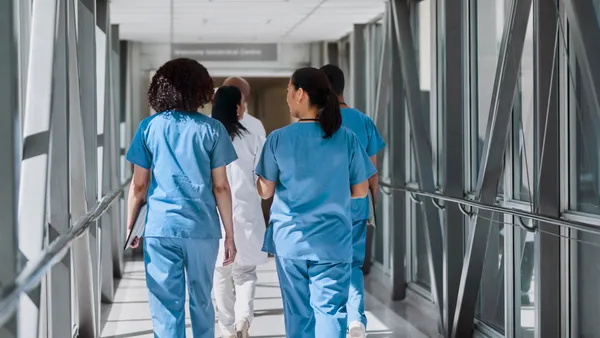Dive Brief:
- HCA Healthcare reported fourth quarter earnings on Friday that narrowly beat analysts’ expectations following back-to-back hurricanes this fall.
- The Nashville-based provider posted $18.3 billion in revenue for quarter, up 6% year over year. However, profit dipped compared to the same period last year, falling from $1.6 billion to $1.4 billion.
- Still, several analysts noted HCA’s financial guidance for 2025 is slightly more conservative than expected, raising concerns that Trump administration funding cuts to Medicaid and the Affordable Care Act could impact hospitals’ bottom lines.
Dive Insight:
Providers have weathered a series of financial challenges in recent years including inflation, labor shortages and volume fluctuations from COVID-19 pandemic. Despite the pressures, for-profit hospital giant HCA has been one of the most steady operators, posting generally stable profits, according to analysts.
However, HCA entered the fourth quarter still recovering from hurricanes Helene and Milton, which tore through the Southeast in September and October and severely disrupted HCA operations in North Carolina and Florida.
The health system has since reopened its Largo Hospital in Florida, which was damaged by flooding during Hurricane Milton. However, any revenue boosts from reopening the hospital were offset by continued losses from market disruptions in Western North Carolina, where HCA’s Mission Health system is headquartered, CFO Mike Marks told investors on a call Friday morning.
HCA recorded $200 million in lost revenue and additional expenses related to the hurricanes during the fourth quarter, bringing the system’s total hurricane costs over the year to $250 million.
The financial impact may continue into next year, as the North Carolina market will likely feel “lingering effects of the hurricane” through the majority of 2025, Marks said.
Hurricane expenses drove half of HCA’s increased spending on supplies during the quarter and all of the company’s increased spending on other operating expenses, according to the CFO.
Both expense lines were higher than analysts expected, and partially offset HCA’s improved performance on salaries, wages and benefit spending, according to a research note from J.P. Morgan analyst Benjamin Rossi on Friday.
HCA also contended with lower volumes of respiratory patients — those seeking treatments for conditions like COVID-19, RSV or pneumonia — compared to the same period last year, Marks said.
Still, HCA experienced system-wide volume increases during the quarter, which executives said signal strong demand for healthcare services.
Same facility admissions increased by approximately 3% during the quarter compared with the same period the year prior. ER visits and inpatient surgeries also rose, which coupled with capacity management initiatives drove same facility revenue per equivalent admission up 2.9% year over year.
The results were met with cautious optimism from analysts.
“Today’s results are likely a relief, but we continue to see volatility across the hospital space over the coming months,” TD Cowen analyst Ryan Langston wrote in a research note published Friday.
Some of that volatility may come from President Trump’s administration. On the Friday call, investors pressed executives about HCA’s plans for shoring up the supply chain ahead of possible tariffs and about how changes to public insurance programs could impact demand for services.
Marks said the company’s group purchasing organization has been working on mitigation strategies for years, including fixed price contracting, supply chain mapping and risk assessment in preparation for possible tariffs.
The executive said HCA has been diversifying away from Chinese suppliers in particular in case of possible tariffs, and that prices for the majority of its supplies are already locked in for 2025.
HCA executives also projected optimism that the Trump administration wouldn’t overhaul the ACA, noting plans set up by the law have seen rising enrollment in recent years and are popular among consumers.
However, Republicans in Congress are expected to restrict or entirely cut more generous funding for ACA coverage, a move that could increase the nation’s uninsured rate and correspondingly increase the burden of uncompensated care on hospitals.
HCA is hoping the Trump administration will recognize the popularity of the ACA and support the program as an opportunity for a political win, CEO Sam Hazen said on the call.
However, “we don’t have any current insight into where this is going,” Hazen conceded.
There are also considerable questions about the fate of state Medicaid supplemental payment programs under Trump.
HCA recorded significant revenue boosts throughout 2024 from the programs, which create funds to help cover the shortfall between low Medicaid reimbursement rates and the actual cost of care for providers.
How much the funds boost a provider’s bottom line is generally inconsistent quarter to quarter, as states approve payment rates on different calendars. This quarter, however, HCA executives said there was more than just scheduling effects at play. Supplemental payments in Tennessee that were previously expected to be greenlit under the Biden administration will actually fall to the Trump administration for final approval.
It’s not clear whether the Trump administration will sign off on the state’s program.
“When we consider the all the various programs, noting the complexity and the variability in the moving parts, we are projecting and estimating that our net effect of supplemental payment programs will range between flat to 2024 to upwards of a $250 million headwind,” Marks said.
Taken together, the volatility and unknowns may have led HCA to issue a more conservative guidance for its 2025 outlook than is typical, according to analysts.
This year, HCA expects to bring in revenue between $72.8 billion and $75.8 billion and profit between $5.9 billion to $6.3 billion.
An analyst from Leerink said: “The high-end looks very doable to us.”













